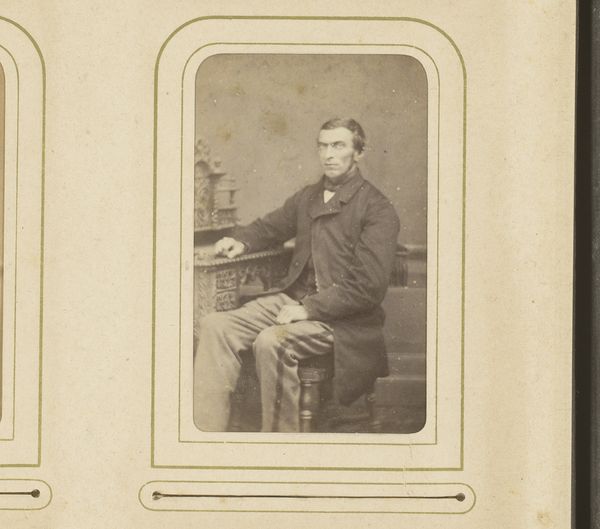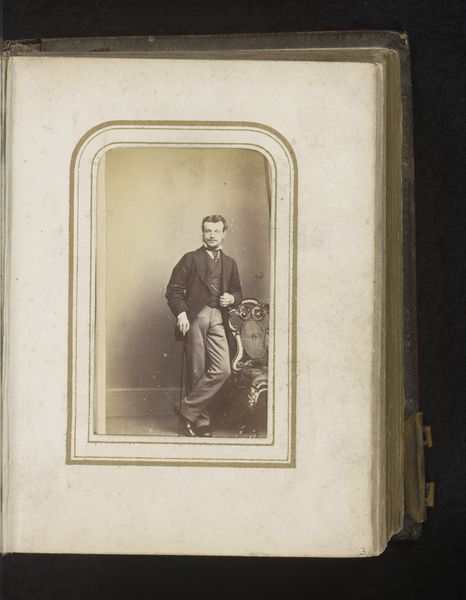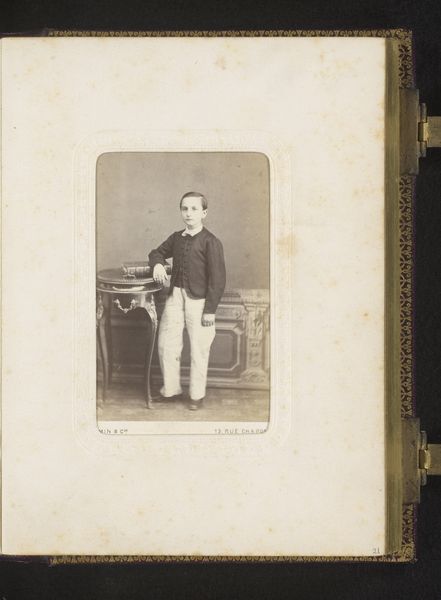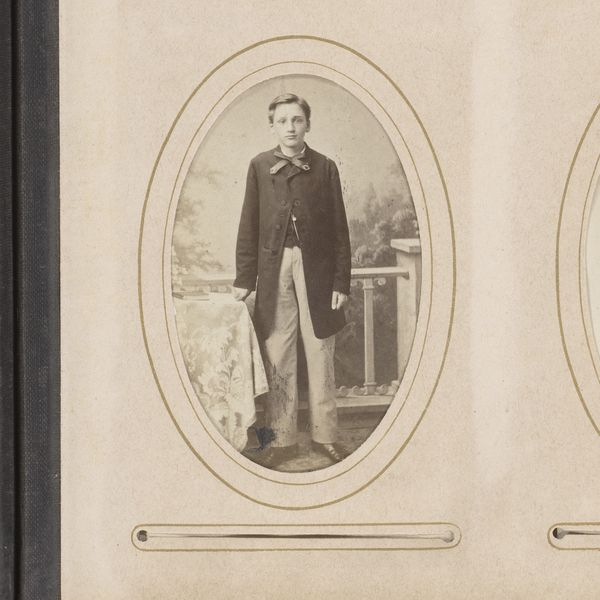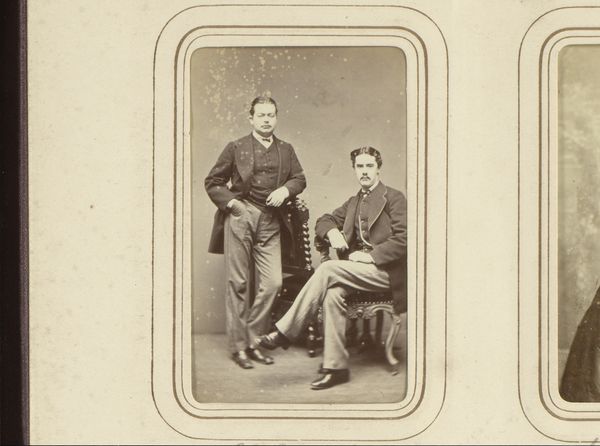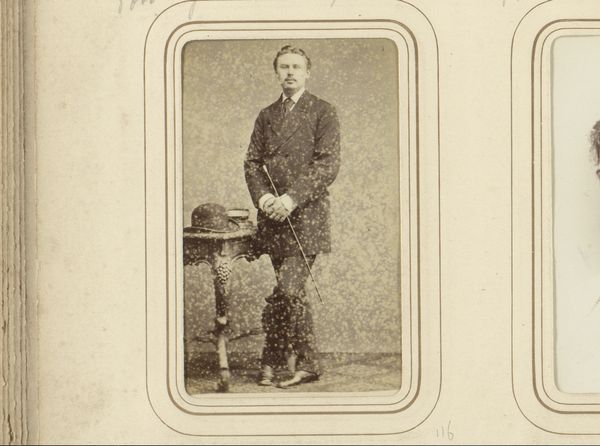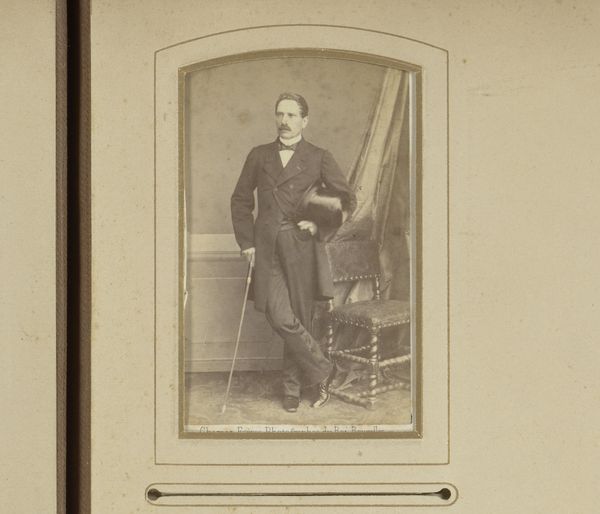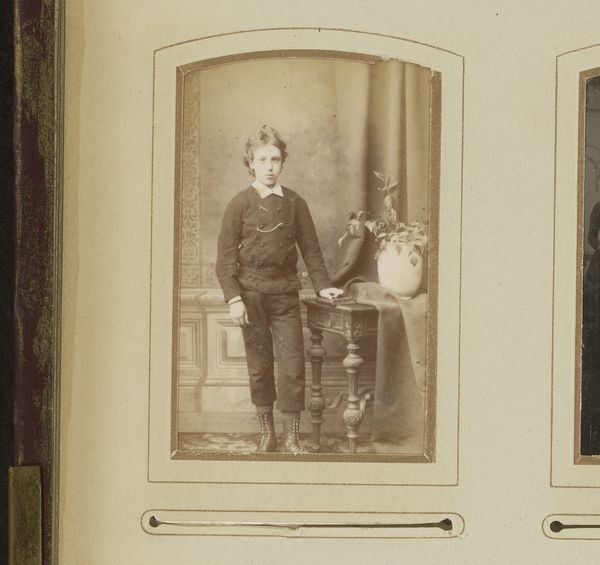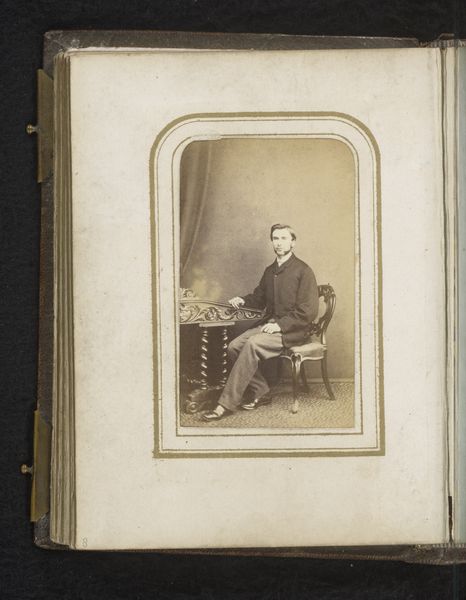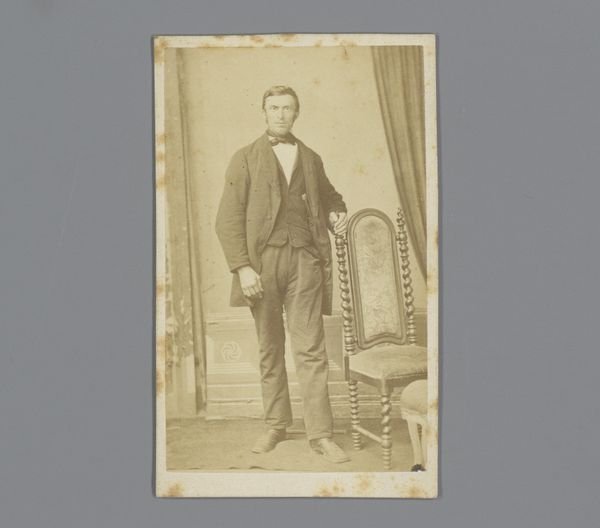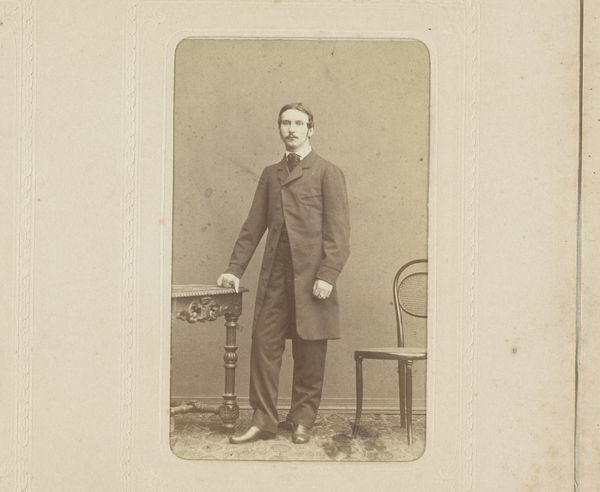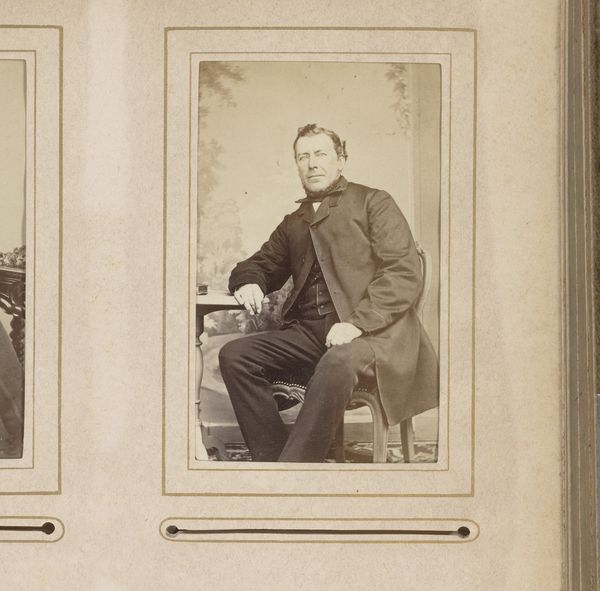
photography
#
portrait
#
aged paper
#
vintage
#
photo restoration
#
colourisation
#
archive photography
#
photography
#
historical photography
#
historical fashion
#
old-timey
#
yellow element
#
19th century
Dimensions: height 84 mm, width 51 mm
Copyright: Rijks Museum: Open Domain
Curator: Here we have "Portret van een man met een stoel," a photograph attributed to Kaufmann & Kesseler, dating from somewhere around 1870 to 1890. It's an albumen print, and you can almost feel the weight of history held within its delicate surface. Editor: The sepia tones create a wistful atmosphere. It reminds me of those antique photos you find tucked away in old books—ghosts of the past. I wonder what his story is? Curator: Portraits of this era were deeply symbolic, designed to convey social standing, morality, and aspiration. Consider his pose: leaning casually against the ornate chair, hat in hand. It’s not just a man and a chair; it's a statement about belonging and propriety. The chair is also an emblem of authority. Editor: I see that, but there's a slight dissonance. He's holding the hat instead of wearing it—an intriguing detail. Maybe it signifies his class and a specific role during that period in time. It is as though he embodies privilege, while also showing it off by leaving his hat behind. The ornate details on his clothes is yet another clear symbol. Curator: That's astute. The hat, typically a marker of status, becomes a held object, suggesting perhaps a nuanced relationship with his own social position. There is humility here as well, or at least an understanding of presentation. The photographic process itself would have held significance, allowing for democratization. Editor: It's fascinating how a simple portrait encapsulates such complex social dynamics. The subject's fashion choices reflect the era, but also his role as it intersects with Victorian notions of gender and class. What does this say about who could and could not afford photography? Curator: Absolutely, it sparks consideration about who controlled the narrative, both visually and socially. Editor: I’m struck by the enduring power of such imagery. It acts as a prompt to challenge existing systems of the period of this artwork. Curator: It certainly does. It’s a journey, connecting our present to the visual echoes of the past. Editor: It is. Thanks to art, we might find connections to each other through stories untold.
Comments
No comments
Be the first to comment and join the conversation on the ultimate creative platform.

